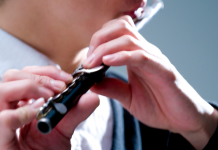The quena is one of the most interesting wooden flutes you’ll come across. It is known for its distinguishable timber and voice, resulting from its unique design feature. If you want to learn more about this instrument and its history, read on. This article will take you through everything you need to know about the instrument.
What Is a Quena?

Quena is a woodwind instrument made from either cane or wood. Its history dates back to pre-Inca civilization, making it one of the oldest instruments. Quena flutes typically have six finger holes and a thumb hole, but their most distinctive feature is the u-shaped notch at its blowing end. This physical characteristic makes it a part of the vertical flute.
Fact: Traditional quena flute music was strongly connected to spiritual customs and celebrations. Today, it is also used for kinds of music, often together with other instruments like guitars.
What Does a Quena Sound Like?
A quena’s sound depends on the instrument’s diameter and the embouchure type (notch) found at the distal end of the flute or close to the lip. For instance, 16-17mm thinner quenas are agile, whereas larger versions (18mm-20mm) register heavier but lower frequencies.
For the notch, a deeper embouchure makes the instrument louder but more challenging to master because you’ll need to blow more air and control the air jet speed to travel at the end.
Here is what the quena sounds like:
Fun Fact: Tuning issues are common with traditional quena designs. Even a professional musician might experience difficulties playing the instrument in the second octave.
How Is the Quena Made?
The walls are usually made from one piece of bamboo, although sometimes, the artisan or maker may use wood. They then shape the bore and use reamers to create the perfect-sized finger holes. These holes help achieve different notes when playing. The notch is then carved, carefully sanded, and smoothened using different files.
Fun Fact: Ancient quenas are tuned in the key of G. Modern versions are available in the C key.
How Do You Play the Quena?
Playing a quena can be tricky at first, but with practice and patience, you’ll master it quickly.
- Place the instrument in a standing position in your hands. Your left hand should rest on top, and your right hand underneath. By positioning it this way, you can gain better control of the notes you play while ensuring greater stability while practicing.
- Hold the instrument with your fingers, ensuring you don’t cover all six finger holes.
- Blow into the quena at a 45-degree angle. Your mouth should aim for the center of the embouchure hole. Vary your breathing and breath pressure to produce different notes from each hole.
- Cover more finger holes while blowing a steady stream of air into the instrument for higher-pitched notes.
- To achieve lower-pitched notes, cover fewer finger holes while blowing a steady stream of air into the instrument’s mouthpiece.
- Experiment and practice until you have mastered different notes and scales.
Conclusion
The queen is a traditional Andes flute still common in many Latin American countries like Peru, Chile, and Bolivia. Its unique design and craftmanship give the instrument its distinct sound, whether for folklore or modern music. This ancient flute will surely add a special touch of beauty to any performance.
Table of Contents






